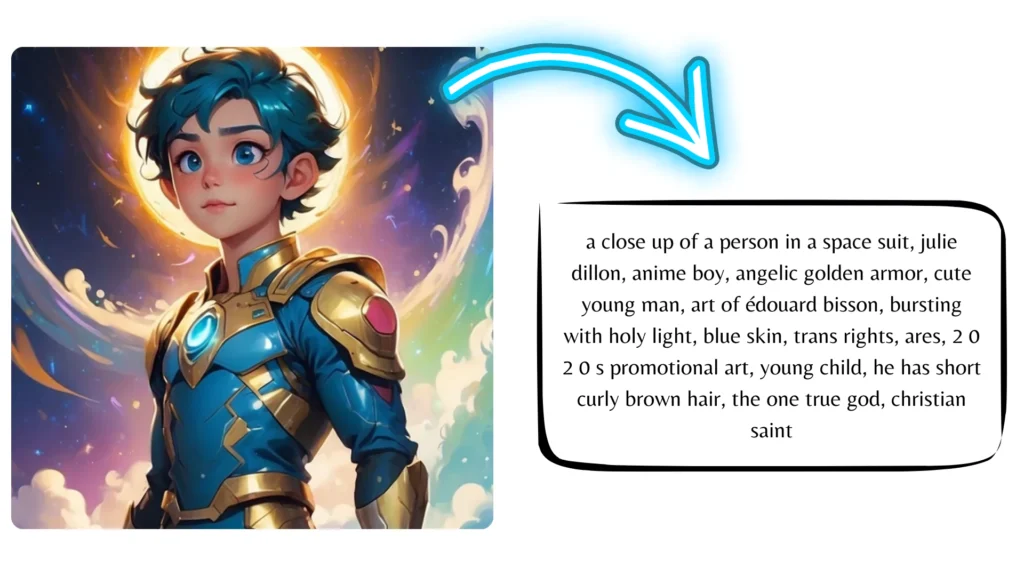CLIP Interrogator AI
Looking for prompts to create similar images? Try CLIP Interrogator

What is a CLIP Interrogator?
CLIP Interrogator is a tool that uses the CLIP (Contrastive Language–Image Pre-training) model to analyze images and generate descriptive text or tags, effectively bridging the gap between visual content and language by interpreting the contents of images through natural language descriptions.
| AI Tool | CLIP Interrogator |
| Developer | pharmapsychotic |
| Official Paper | Link to Paper |
| App | Web-based application |
| Models Used | BLIP, CLIP |
| HuggingFace | Run Here |
CLIP Interrogator App
The CLIP Interrogator on Hugging Face is a user-friendly application developed by pharmapsychotic. It utilizes the CLIP model to analyze images and generate relevant text descriptions.

This tool is particularly useful for individuals looking to understand or replicate the style and content of existing images, as it helps in identifying key elements and suggesting prompts for creating similar imagery.
App Demo
How does the CLIP Interrogator work?
1. Base Caption Generation:
Use the BLIP model to create an initial caption for the image. This gives a general description of what’s in the image.
2. Enhancement with “Flavors”:
Adds specific phrases, known as “Flavors,” to the base caption. These phrases cover various categories like objects, styles, and artist names.
3. Matching with CLIP:
Uses the CLIP model to match the image with the most fitting phrases from the “Flavors”. This ensures the final text is more detailed and closely aligned with the image’s content.
4. Application:
The enriched text descriptions are especially useful for generating prompts for AI image generators, providing a deeper understanding of the image’s elements.
This approach allows the CLIP Interrogator to generate richer and more detailed text than the BLIP model alone, making it effective for generating prompts for AI image generators like Stable Diffusion and MidJourney.
CLIP Interrogator Models
1. BLIP Model:
BLIP (Bootstrapped Language Image Pretraining) focuses on generating a basic, initial caption for an image.
It’s designed to provide a general understanding of what the image depicts, creating a simple and straightforward description. This serves as the foundation for further analysis.
2. CLIP Model:
CLIP (Contrastive Language–Image Pre-training) takes the basic description from BLIP and enhances it. It compares the image with a variety of predefined phrases to add more details to the description.
This process ensures that the final text is much more detailed and closely aligned with the specific content and context of the image.

3. OpenCLIP Model:
OpenCLIP is designed to maintain the core functionality of the original CLIP model, which involves understanding and interpreting images in the context of natural language.
This model is particularly useful for tasks that involve matching images with textual descriptions or vice versa. OpenCLIP is widely used in various AI and machine learning applications due to its versatility and the open nature of its training and development.
CLIP Interrogator Paper Explained
The CLIP Interrogator paper presents a study focused on enhancing image classification through the use of descriptive text generated by image captioners. It explores how captioners can extract valuable information from images and how this can be applied in the context of image classification.
The paper involves experiments using different image captioning models, like InceptionV3+RNN, BLIP, and the CLIP Interrogator itself. It demonstrates that using text descriptions from these models can sometimes achieve higher classification accuracy compared to standard image-based classifiers.
The paper also shows that combining image-based classifiers with descriptive text classifiers can improve accuracy. This research contributes to the understanding of how linguistic information extracted from images can be effectively utilized in image classification tasks.
FAQs:
Share Us: